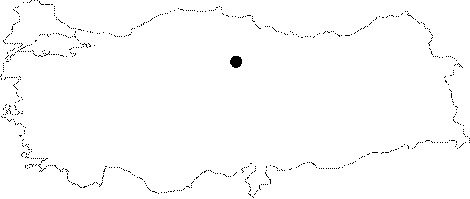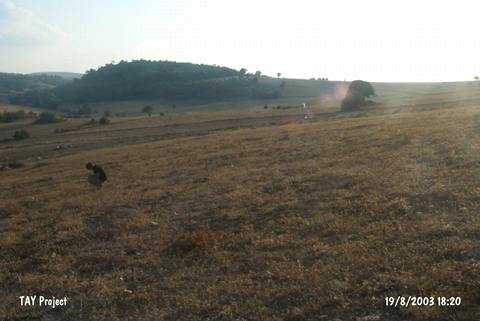|
©The Archaeological Settlements of Turkey - TAY Project
|
|
|
|
|
|
Oymaagaç Mezarligi |
|
|
For site maps and drawings please click on the picture...  |
For photographs please click on the photo...  |
|
Type:
|
Cemetery |
|
Altitude:
|
965 m |
|
Region:
|
Black Sea |
|
Province:
|
Amasya |
|
District:
|
Merkez |
|
Village:
|
Oymaagaç |
|
Investigation Method:
|
Survey |
|
Period:
|
EBA III |
|
|
|
 |
|
| Location: The cemetery is about 1.5 km northeast of the village of Oymaagaç; located northeast of the Çorum Province. It is accessed through the villages of Karasart; Pinarbasi and Emert from the exit at the 30th km of the Çorum- Merzifon motorway. |
| Geography and Environment: No information was provided about this cemetery. |
| History: |
| Research and Excavation: The name of Oymaagaç was introduced when the cemetery finds plundered by the treasure hunters were sold to the Ankara Museum of Anatolian Civilizations; the Istanbul Archaeological Museum and the museums of Amasya and Tokat. The finds were published by T. Özgüç. It is predicted by T. Özgüç that most of the metallic finds came from Oymaagaç; and some from the cemetery of Göller. |
| Stratigraphy: |
| Small Finds: Human Remains: It is assumed that this cemetery has pithos graves same as the cemetery of the Göller Village. Grave Goods: It is noted that both weapons and tools were recovered from the graves. The spearheads preserved at the Museum of Amasya are typical of the Black Sea region. The end of the tang is folded. The crest is in the center of the blade with a wide shoulder. To attach the shaft; there are two holes [Özgüç 1978:fig.72-75]. A fire-stick-like spearhead was recovered. The daggers with a rivet hole on their tang have almost a triangular blade. One sample has high shoulders. The blade of a sword with a broken tip represents the typical EBA sword with a long blade in this region. The upper parts of the thick handles of the two cymbals not identical in size are strangled. The edges are intentionally folded. Also found are long pins. Their heads were decorated with vertical and horizontal grooves. One of them has inlayed holes. The axes made of copper/bronze like other materials are similar in forms. The beautiful samples of the hammer axes with folded blades are assumed to come from the Oymaagaç cemetery. The butt of one of the axes is folded [Özgüç 1980:pl.XIV/4]. Likes of the small axes recovered from Mahmatlar were found here. The two sun discs with bulls purchased by the Istanbul Archaeological Museum are suggested to be found here [Özgüç 1980:pl.II-IV]. |
| Remains: |
| Interpretation and Dating: The graves of the Oymaagaç cemetery have been demolished and the grave goods were distributed; most being sold to private collectors; a little to the museums. It still remains uncertain if the finds preserved in the museums came from Oymaagaç. Among the finds; the ones in gold and silver are assumed to be smuggled. It is noted that finds like metallic weapon and tools; cymbals and sun discs were left as personal belongings of the individuals into the public graves in much the same way they were left into the graves of the king/prince/ruler like other EBA cemeteries in Northern Anatolia. Based on the dating of these graves; Oymaagaç is dated to the EBA III. |